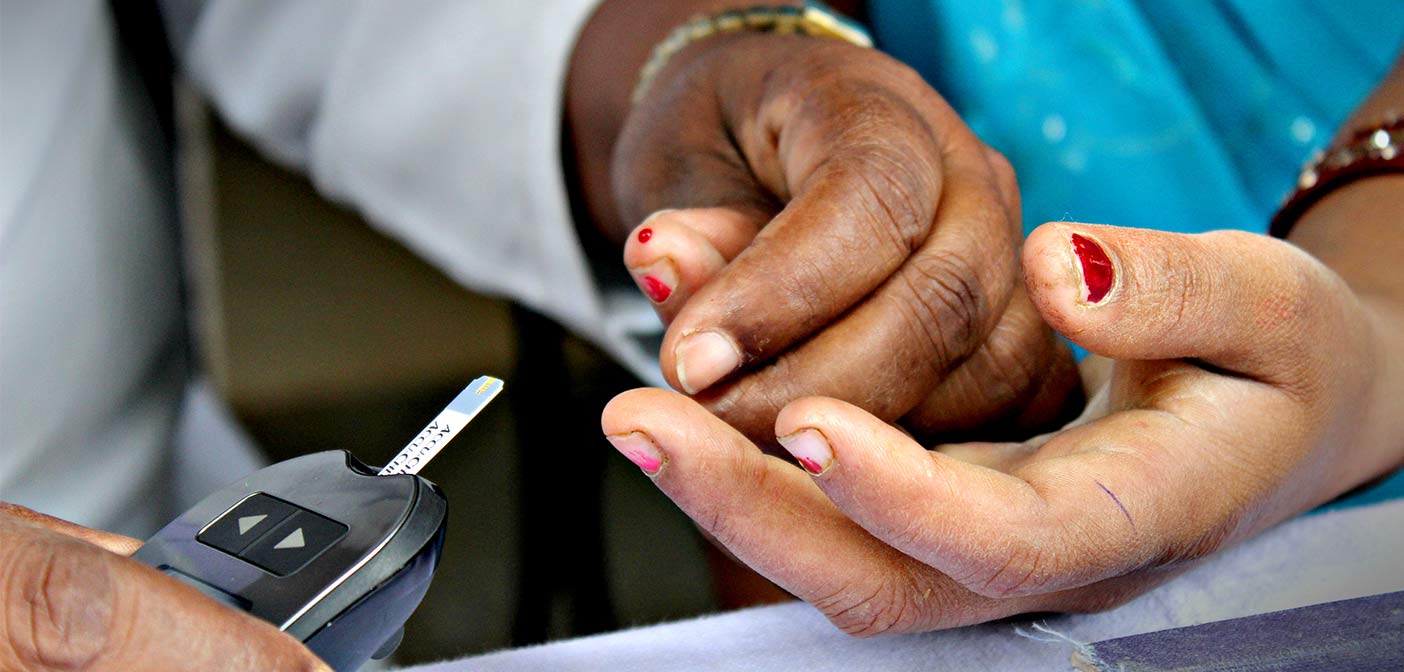By Anam Khan and Indrani Kashyap
Impatient in-laws complicate screening of Indian mothers-to-be for high blood sugar
Hoshangabad, India—Administering a simple finger test to check pregnant women for high blood sugar is the easy part of Chandra Rajan’s job as a nurse at the Community Health Center Babai, a 30-bed facility serving a large tribal population from villages in central India. The trickier task is convincing mothers-in-law of mothers-to-be that the test—which involves a two-hour wait after drinking a sugar solution—is worth everyone’s while.
Having practiced nursing for three decades, Rajan, 53, is undaunted by obstacles, whether familial, cultural, or clinical. She’s wholly committed to screening all her patients for gestational diabetes mellitus (GDM), a common and dangerous condition. Despite its prevalence in India, where it affects 10 to 14 percent of pregnancies, diagnosis and treatment for GDM is hardly the norm here. Not yet, at least.
“We learned during our training that it is mandatory to test every antenatal woman for GDM,” Rajan says of an ambitious effort by the Ministry of Health and Jhpiego to establish guidelines and then empower health care workers across government facilities in Hoshangabad district of Madhya Pradesh state to universally screen for and manage the condition.
The initiative’s success rests squarely on nurses as well as auxiliary nurse midwives and community health workers: So far, 150 health workers and more than 1,100 community workers have been trained, resulting in about 19,000 women being tested.
The ultimate goal is helping every woman avoid GDM’s complications, which include everything from spontaneous abortion and intrauterine death to lifelong disease. For many nurses and midwives, this means learning new counseling skills and competencies in addition to acquiring the supplies necessary for detection and treatment.
Priyanka Rajput, an auxiliary nurse midwife from the same district but based about 17 miles away at Community Health Center Itarsi, has discovered that a universal screening effort can mean dealing with roadblocks that are equally widespread. “Initially, women would not agree for this [glucose] test. If the woman agreed, her mother-in-law would not. They were reluctant to wait for two hours.”
Powerful but compassionate leadership on the part of midwives and nurses is critical to generating awareness and demand for GDM testing. Rajput visits communities near her health center throughout the week, personally reaching out to a population of about 15,000 as she provides primary care to women and children from varied backgrounds.
“Our efforts over the past year have resulted in women and families becoming quite aware of the need to test for sugar during pregnancy,” she says. “Women who get tested also talk about its benefits to others in the community and this helps in generating awareness and acceptance for this test. The motivational factor is the wellbeing of their unborn. Every mother wants to give birth to a healthy baby and stay healthy herself.”
Senior Communications Manager Maryalice Yakutchik contributed to this article.

 Forging Policy: How Can Doulas Improve Black Maternal Health?
Forging Policy: How Can Doulas Improve Black Maternal Health? Global Service Learning: Guatemala
Global Service Learning: Guatemala Forging Policy: Associate Dean Jermaine Monk and Education After Affirmative Action
Forging Policy: Associate Dean Jermaine Monk and Education After Affirmative Action Most People Want to Breastfeed, But Need More Support To Do So
Most People Want to Breastfeed, But Need More Support To Do So Awards for Diversity
Awards for Diversity






